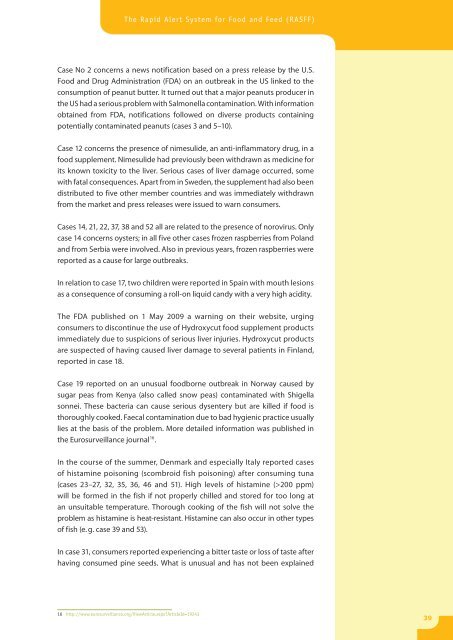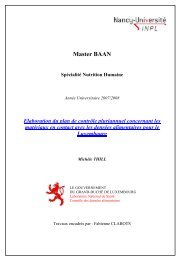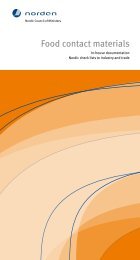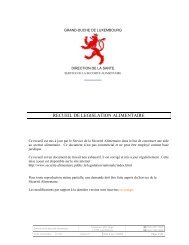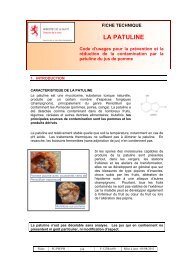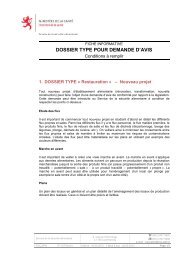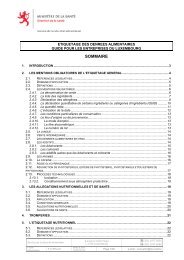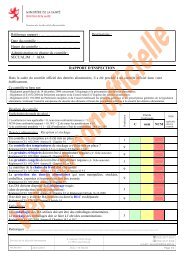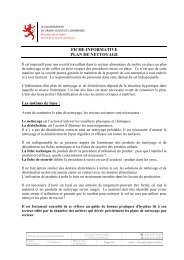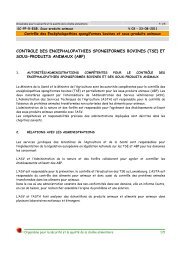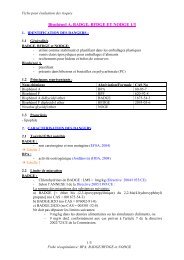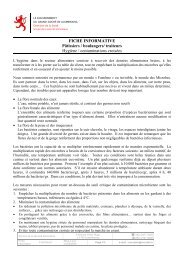(RASFF) Annual Report 2009 - European Commission - Europa
(RASFF) Annual Report 2009 - European Commission - Europa
(RASFF) Annual Report 2009 - European Commission - Europa
Create successful ePaper yourself
Turn your PDF publications into a flip-book with our unique Google optimized e-Paper software.
The Rapid Alert System for Food and Feed (<strong>RASFF</strong>)<br />
Case No 2 concerns a news notification based on a press release by the U.S.<br />
Food and Drug Administration (FDA) on an outbreak in the US linked to the<br />
consumption of peanut butter. It turned out that a major peanuts producer in<br />
the US had a serious problem with Salmonella contamination. With information<br />
obtained from FDA, notifications followed on diverse products containing<br />
potentially contaminated peanuts (cases 3 and 5–10).<br />
Case 12 concerns the presence of nimesulide, an anti-inflammatory drug, in a<br />
food supplement. Nimesulide had previously been withdrawn as medicine for<br />
its known toxicity to the liver. Serious cases of liver damage occurred, some<br />
with fatal consequences. Apart from in Sweden, the supplement had also been<br />
distributed to five other member countries and was immediately withdrawn<br />
from the market and press releases were issued to warn consumers.<br />
Cases 14, 21, 22, 37, 38 and 52 all are related to the presence of norovirus. Only<br />
case 14 concerns oysters; in all five other cases frozen raspberries from Poland<br />
and from Serbia were involved. Also in previous years, frozen raspberries were<br />
reported as a cause for large outbreaks.<br />
In relation to case 17, two children were reported in Spain with mouth lesions<br />
as a consequence of consuming a roll-on liquid candy with a very high acidity.<br />
The FDA published on 1 May <strong>2009</strong> a warning on their website, urging<br />
consumers to discontinue the use of Hydroxycut food supplement products<br />
immediately due to suspicions of serious liver injuries. Hydroxycut products<br />
are suspected of having caused liver damage to several patients in Finland,<br />
reported in case 18.<br />
Case 19 reported on an unusual foodborne outbreak in Norway caused by<br />
sugar peas from Kenya (also called snow peas) contaminated with Shigella<br />
sonnei. These bacteria can cause serious dysentery but are killed if food is<br />
thoroughly cooked. Faecal contamination due to bad hygienic practice usually<br />
lies at the basis of the problem. More detailed information was published in<br />
the Eurosurveillance journal 16 .<br />
In the course of the summer, Denmark and especially Italy reported cases<br />
of histamine poisoning (scombroid fish poisoning) after consuming tuna<br />
(cases 23–27, 32, 35, 36, 46 and 51). High levels of histamine (>200 ppm)<br />
will be formed in the fish if not properly chilled and stored for too long at<br />
an unsuitable temperature. Thorough cooking of the fish will not solve the<br />
problem as histamine is heat-resistant. Histamine can also occur in other types<br />
of fish (e. g. case 39 and 53).<br />
In case 31, consumers reported experiencing a bitter taste or loss of taste after<br />
having consumed pine seeds. What is unusual and has not been explained<br />
16 http://www.eurosurveillance.org/ViewArticle.aspx?ArticleId=19243<br />
39


